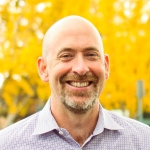
A study released last week shows that teachers across the country are more equipped to take on personal finance instruction than they were a decade ago.
This is great news, as less than 1 in 10 teachers felt confident teaching personal finance in 2009, compared with 7 in 10 today.
Teachers are prepared because they are passionate about this subject. They are passionate because they know it’s important. And they know it’s important because they see daily examples of how it makes a difference in the lives of their students.
Peter De Kleine teaches history and social studies at Lenape Valley Regional High School in New Jersey. Last year, his school made a commitment to personal finance, so he agreed to teach the subject.
De Kleine started attending our professional development workshops in November of last year, and by the end of January, he was ready to present material using his own life experiences to make lessons more personal. For example, he began investing in the stock market and Crypto, which he now brings into the classroom.
“This has engaged my students to think beyond the present and how they can use their finances and make their money work for them,” he says. “Many have discussed retirement, opening Roth IRAs, and getting their parents to invest for their own future.”
Renee Nelson has been teaching at KIPP NYC College Prep High School in New York City for 13 years. As a founding educator at her school, she was able to introduce new courses, so she chose to teach a personal finance course as a math elective, so math would be relevant to their lives.
At first, she would bring money questions she had in her life into the classroom. She wanted to purchase a home in the city, which can be a daunting challenge. Her students helped her fix her finances so she could get approved for a mortgage. Talk about real-world education!
As Nelson engaged in professional development, she brought additional practical financial issues to her students. She would share with them her steps in stock market investing and saving for retirement. They learned along with her.
More from DA
Today an expert personal finance educator, she offers an honors level course.
America’s teachers never had such courses when they were students, so it’s not surprising that the vast majority have to learn as they teach. We seem to have caught up to this challenge.
Kudos to the 6,000 teachers who, since last March, have participated in 120,000 hours of learning through our online platform that helps them build content knowledge, collaborate with other teachers and find useful classroom resources.
Here’s hoping this grassroots movement of passionate personal finance teachers can move the administrative needle. Just six states require a full semester high school course in personal finance to graduate. The good news is that 18 states are considering legislation currently, no doubt recognizing the need, especially in the wake of the pandemic.
Often in the past, when considering whether or not to require personal finance in schools, states would highlight the lack of a confident and qualified teaching corps as the largest inhibitor.
With this barrier behind us, it’s time for school leadership at the principal, district, and state levels to step up and make this a priority. The teachers are ready, the students are eager, the parents overwhelmingly want it and post-pandemic, having financial knowledge and skills have never been more essential.
Tim Ranzetta is co-founder of Next Gen Personal Finance, the nation’s largest provider of personal finance curriculum and professional development in K-12, reaching more than 43,000 and 2 million students.









